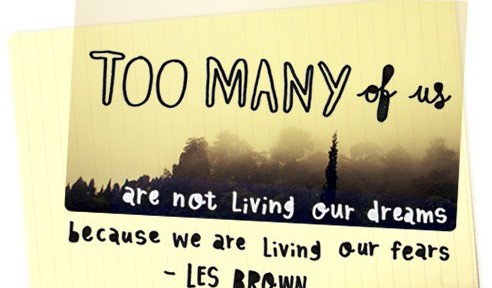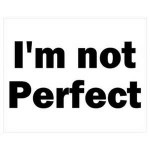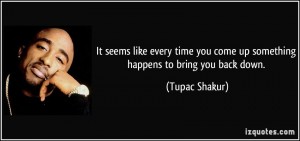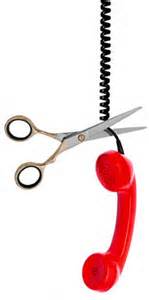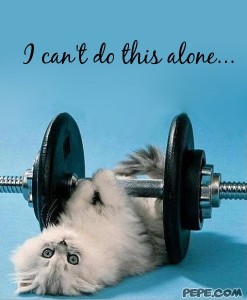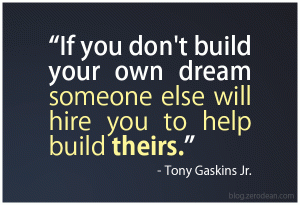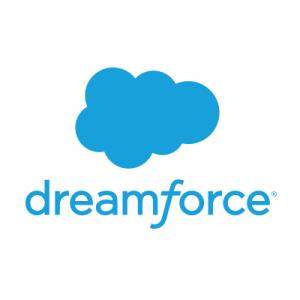
Dreamforce is the largest technology conference in the world produced by Salesforce
This time last year a random conversation at Dreamforce lead me to a new career path. I hadn’t set out to find a new job as I was enjoying my role in Product Management with plenty of growth opportunity ahead, however the new role presented a much greater challenge in areas that would truly put me outside my comfort zone. Only one perceived drawback, the role was in pre-sales.
I considered all the pros and cons then decided to take the job, and just like that, a transformation began that changed the perceptions of how I viewed myself and a company I’d worked at for over 6 years. It’s a long story but the gist is I always held fast to the notion of detesting sales people (with the exception of a handful who I held in very high esteem). I can’t lie, I even took some measure of pride in hating sales people as many people quietly (or loudly) do. Bottom line, I was bonafide tech folk and I didn’t do “sales”. I made, created, ideated, worked hard to understand problems, developed solutions and took pride in my DIY mindset. Then suddenly, almost overnight, in the blink of an eye I had joined the ranks of one of the fastest growing sales armies in the world as a Senior Solution Engineer. It suffices to say, I had a bit of a social crisis while struggling to adjust to new perspectives on long held misbeliefs about technical pre-sales.
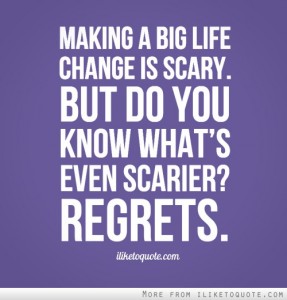 The cinch that lead me to accept the role was the promise that I would be working with other technical folks, CTOs, CIOs, Architects and Developers more often than a VP of Sales. This meant that I would be working with the people who spoke my language, the language of security, scale, agility, bits and bytes, excellence of execution and fresh innovation beyond keeping the lights on. I assumed I would find challenges outside my comfort zone that would keep me excited, but what I found was that the technical part was in general no more challenging than most other problems I’d seen in my other technical roles. The immediate unexpected challenge I faced was how to avoid losing myself in the fast paced energy of constantly churning sales cycles, a highly aggressive & type A culture with an emphasis on “ain’t nobody got time for that!” if it didn’t have to do with meeting a number. Real talk, I’ve always been goal oriented but never with the pure intention of scoring points. My ENFP Myers Brigg rating would have me focusing on quality rather than quantity and while my corporate culture was committed to catering to quality, the consistent pressure and focus on the quota was entirely foreign to me coming from the world of technology execution. So how did I keep my bearings? Well, to be frank, I didn’t. At least not at first.
The cinch that lead me to accept the role was the promise that I would be working with other technical folks, CTOs, CIOs, Architects and Developers more often than a VP of Sales. This meant that I would be working with the people who spoke my language, the language of security, scale, agility, bits and bytes, excellence of execution and fresh innovation beyond keeping the lights on. I assumed I would find challenges outside my comfort zone that would keep me excited, but what I found was that the technical part was in general no more challenging than most other problems I’d seen in my other technical roles. The immediate unexpected challenge I faced was how to avoid losing myself in the fast paced energy of constantly churning sales cycles, a highly aggressive & type A culture with an emphasis on “ain’t nobody got time for that!” if it didn’t have to do with meeting a number. Real talk, I’ve always been goal oriented but never with the pure intention of scoring points. My ENFP Myers Brigg rating would have me focusing on quality rather than quantity and while my corporate culture was committed to catering to quality, the consistent pressure and focus on the quota was entirely foreign to me coming from the world of technology execution. So how did I keep my bearings? Well, to be frank, I didn’t. At least not at first.
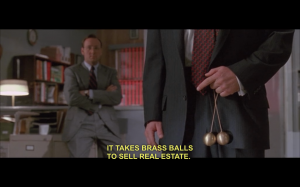
Quote from Glengary Glen Ross, "It Takes Brass Balls to Sell Real Estate"
I spent 5 straight months drinking from the sales funnel firehouse and it spilled all over me. Yet slowly but surely I picked up on the lessons that would be critical for my healthy adjustment and authenticity. I sank my hooks into doing stuff that I thought was cool and interesting as much as possible and learned from the people around me who demonstrated a strong sense of individuality, thought leadership & sincerity. It was by latching onto the clear vision of passionate problem solving that I was able to turn my back on the image of the slimey, overpromising sales guys who came from downtown for Mitch and Murray. I turned my back on that slick hair greaseball, at least in theory anyway. I still needed to truly test myself. I needed proof that I was growing into a better “me”. I decided venture into territory.
With MacBook Air in hand I foraged in the wild of my territory for 10 days delivering Developer Workshops in 5 cities, San Francisco, Austin, Seattle, Los Angeles and Salt Lake City. I truly put myself to the test and these are the lessons I learned, which I’ve decided to share with you now. I related each challenge of the journey to a lesson learned and included it in my first ever infographic. Read on for details on each lesson I learned. Powerpoint has game, and so does hubspot where I got the template! *wink*

Infographic: 5 Lessons Learned in Technical Sales
5,858 Miles, Always Be Discovering
In reality I travelled more than 5,858 miles but the point is that being away from home is difficult. However it also can leave you with a sense of abandon from thinking about things which with distance you no longer have control over back at home. This presents an opportunity to practice presence in a powerful way.
Real Talk: I’m not down with the A.B.C. (“Always Be Closing”) mentality, but I’m definitely down with A.B.D. – “Always Be Discovering”. Being on the road makes discovery easy to practice because well, everything is foreign. Seeing things with a new eye reveals insight in problems around us all the time, city to town, taxi to uber, airline to airport. Being present and engaged with what’s around you offers invaluable opportunities to learn about your customers, customer’s customers, and what makes a great experiences vs. a poor one. Keep your eyes open.
100 Developers, Developers are Diverse, Engage Them
In those 10 days I engaged with over 100 of my clients or prospective clients developers. The best part about that experience was that they were all different. Even in the same room their backgrounds varied from analyst, to admin, to developer, to c-level and the challenges they faced varied from the need for speed and agility to integration challenges and beyond. With such diversity abound it’s very important to realize that not everyone shares the same level of knowledge, even and especially when working with smart developers.
Real Talk: There are hundreds of platforms out there ranging from languages to frameworks to services and no one is an expert on them all. This means it’s best to start everyone off on the ground floor with the basics. In other words take people from 0 to 60 when exposing them to a new platform no matter how experienced they are, this enables everyone to be engaged through the process and learn as much as they can to walk away with value in their time spent.
25 Hours of Developer Workshops, Facilitate Exploration
Being a strange person in a strange land is hard. But in this line of work you have to be strong and confident even and especially when you don’t have home court advantage. Just be careful how that confidence shows up. Let me ask you this… What do you do when someone shows up acting like they’ve got all the answers and they’re going to solve all your problems? If you are anything like me you start rolling your eyes. The sad part is the “typical sales guy” does just that when he starts offering solutions before the problem has even been articulated, trying to discover the problem you have that fits their solution. Man, that’s the blind leading the blind. Lucky for me the folks who came to my developer workshops reinforced in me the importance of facilitating exploration. They showed up with their open eyes, looking to see, touch, and lastly hear what I had to say. I did my best to talk as little as possible and instead facilitate and enable them to explore as much as I could.
Real Talk: Once someone gets their hands on a tool they’ll use it to solve problems on their own. In Technical Sales we’re just here to help you find the tools to prioritize for exploration. Bottom line, people’s time is valuable so shut up and help folks get their hands dirty so they can do their work.
10 Days in Territory, Relate, Correlate, Tessellate
One of the biggest challenges in introducing a new platform to a group of people is the answer to the question “What can I do with it?” It sounds like a simple question right? Imagine for a moment, looking back to your childhood when someone first dropped a box full of tinker toys, legos, or some other abstract platform for building “stuff” in front of you. Remember how you couldn’t imagine what you could build at first? It wasn’t until you tinkered with it for a while, or looked at things built by other people did visions begin to emerge, and by the end of the day you probably had built a bunch of things that connected with your imagination in powerful ways. Platforms are just like that, tools for delivering a vision. Steven Pressfield said it best when he said “The professional dedicates himself to mastering technique not because he believes technique is a substitute for inspiration but because he wants to be in possession of the full arsenal of skills when inspiration does come. The professional is sly. He knows that by toiling beside the front door of technique, he leaves room for genius to enter by the back.”
Real Talk: The balance between tools, technique and innovation is scary and unpredictable. No platform has the answer to everything. And on top of that innovation is hard! It becomes especially difficult when businesses are pressuring their teams to tow the line and just make it “good enough”. This is why stories are so powerful. The practice of sharing a story of innovation where the product your audience is touching right now played a key role sparks the imagination. The story or stories you tell must either “relate or correlate” to the challenges or conditions of your audience, that enables them to “tessellate” bits and pieces of your platform into their vision of a complete and innovative solution and gives them stories to tell to help sell their vision to the higher ups who would settle for “good enough”.
5 Cities, Stay Hydrated & Reflect
After meeting clients in 5 different cities there was one scary thing I found they all had in common. Each event had one or two attendees that posed a question or two that I didn’t have a good answer to. Getting stumped in front of an audience is no fun at all, and if handled incorrectly can be terribly embarrassing. By the way, the first thing someone taught me when I started this job was how to deflect difficult questions. Most of the deflection tactics centered around delaying the answer or trying to convince them that they are asking the wrong questions and suggesting a “better” question for them to ask. I hope I am not the only one who thinks that is a terrible strategy. As a matter of fact, question deflection is one of my personal pet peeves so there was no way I was going to internalize this strategy with my own clients. This is why I say “don’t deflect, reflect”. It took me a while but I learned to put special emphasis on reflection when I don’t have the answers because my mother taught me at a young age that “it’s sad not to know, it’s a tragedy to not want to know”. Let me be frank again, if you knew the answer to everything you’d be developing high frequency trading systems for Wall Street or cashing in like Paul Tudor Jones. No one is perfect so do everyone a favor and don’t try to pretend to be.
Real Talk 1: Good engineers (in sales or otherwise) enjoy breaking down complex problems and are not too proud to bring an interesting challenge up to someone in their braintrust when they don’t know the answer. There are many ways to reflect on a challenge; you can pose it back to the person who asked, or offer it up to others in the room who may have experience with it, or discuss it openly for a moment before putting it in the parking lot for research or follow-up later on. To quote John C. Maxwell “Leaders who fail to prune their pride will meet demise. That’s not a guess, it’s a guarantee. With pride, it’s not a matter of ‘if’ we will fall, but ‘when.’ There are no exceptions.” Reflecting is a great way to “get right” when you already know you are most likely wrong.
The second part of this lesson is staying hydrated. Traveling to all these places is hard on the body and hard on the psyche. At the end of some days I just wanted a stiff drink. But I resisted the urge. Why? Because the instant gratification of a shot of whisky can too easily become a crutch or a distraction from what you are really seeking, which is good health, sound mind and security. Usually a glass of water and a phone home to someone sweet does a better job and keeps your immune system strong.
Real Talk 2: Stress on the body can make you sick. Since our body is 65% water when we consume diuretics like alcohol or sugary drinks our bodies have to work even harder to stay hydrated. Drinking water, coconut water, and working out in the morning goes a much longer way in alleviating stress than a stiff drink.
Maintain Engagement with Feedback Loops:
I’ll end this with the reason why I wrote this in the first place. In 10 days I met over 100 people and many of them I spent a significant amount of time with and will spend more time with them in the future. That means it’s more important than ever to keep the lines of communication clear and open. Whether it’s to recommend a client for a pilot, or to deep dive into a challenge they are having or to learn about some cool tech thing that they do, keeping the channels of feedback clean and clear is critical. Many people are hesitant to reach out to others for help, they don’t want to waste anyone’s time, or it might take too much effort to explain a challenge over email, and it takes some people a long time to develop a rapport where they feel comfortable picking up the phone.
Real Talk: These days it’s important to be available in a variety of ways whether that be linkedin, twitter, email, Chatter or skype chat, frictionless communication is one of the keys to building lasting relationships. That said, if you read my lessons learned or enjoyed the infographic I hope you’ll join in and give me some feedback. Thank you!
 The internet has had a profound effect on business, yet nothing is more underrated than the power of a warm email introduction. In the startup world warm introductions are a life blood, in the professional world it makes the difference in finding the best employment, and in your personal life the best dates or valuable resources to do personal business with. For example I got an excellent broker through a warm introduction. With all the value that can be shared, why are warm introductions so difficult to get?
The internet has had a profound effect on business, yet nothing is more underrated than the power of a warm email introduction. In the startup world warm introductions are a life blood, in the professional world it makes the difference in finding the best employment, and in your personal life the best dates or valuable resources to do personal business with. For example I got an excellent broker through a warm introduction. With all the value that can be shared, why are warm introductions so difficult to get?



